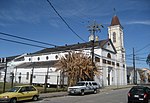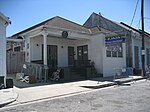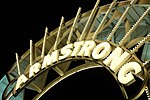2003 John McDonogh High School shooting
2003 in Louisiana2003 mass shootings in the United States2003 murders in the United States21st century in New OrleansApril 2003 crimes in the United States ... and 8 more
Attacks in the United States in 2003Crimes in LouisianaCriminal duosHigh school killings in the United StatesHigh school shootings in the United StatesMass shootings in LouisianaMass shootings in the United StatesMurder in Louisiana
The John McDonogh High School shooting was a school shooting that occurred on April 14, 2003 at John McDonogh High School in the Mid-City neighborhood of New Orleans, Louisiana, United States. Two men shot and killed 15-year-old student Jonathan "Caveman" Williams during a mid-morning gym class in a gang neighborhood retaliation killing.
Excerpt from the Wikipedia article 2003 John McDonogh High School shooting (License: CC BY-SA 3.0, Authors).2003 John McDonogh High School shooting
Kerlerec Street, New Orleans French Quarter
Geographical coordinates (GPS) Address Nearby Places Show on map
Geographical coordinates (GPS)
| Latitude | Longitude |
|---|---|
| N 29.9688 ° | E -90.0652 ° |
Address
Kerlerec Street 1331
70116 New Orleans, French Quarter
Louisiana, United States
Open on Google Maps









